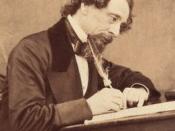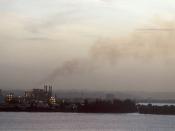Industrial Revolution
As the number of factories grew people from the countryside began to move into the towns looking for better paid work. The wages of a farm worker were very low and there were less jobs working on farms because of the invention and use of new machines such as threshers. Also thousands of new workers were needed to work machines in mills and foundries and the factory owners built houses for them.Cities filled to overflowing and London was particularly bad. At the start of the 19th Century about 1/5 of Britain's population lived there, but by 1851 half the population of the country had set up home in London. London, like most cities, was not prepared for this great increase in people. People crowded into already crowded houses. Rooms were rented to whole families or perhaps several families. If there was no rooms to rent, people stayed in lodging houses.
The worker's houses were usually near to the factories so that people could walk to work. They were built really quickly and cheaply. The houses were cheap, most had between 2-4 rooms - one or two rooms downstairs, and one or two rooms upstairs. Victorian families were big with 4 or 5 children. There was no running water or toilet. A whole street would have to share an outdoor pump and a couple of outside toilets. Most houses in the North of England were "back to backs" (built in double rows) with no windows at the front, no backyards and a sewer down the middle of the street. The houses were built crammed close together, with very narrow streets between them. Most of the houses were crowded with five or more people possibly crammed into a single room. Even the cellars were full. Most of the new...


